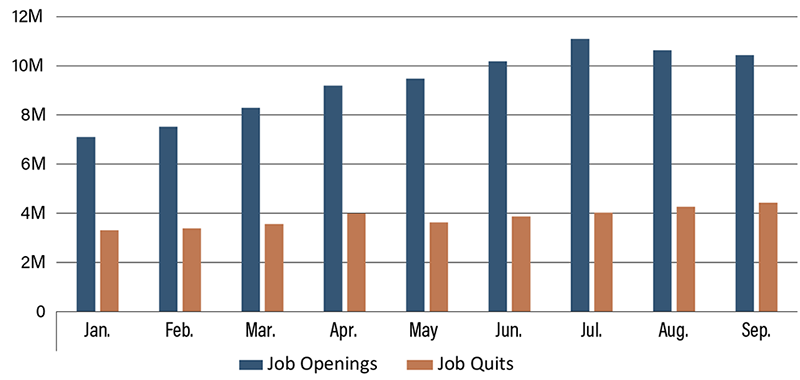It’s Quittin’ Time: The Great Resignation

Many believe you shouldn’t quit one job until you have a new one. But these days it seems as though it really doesn’t matter if you have another job lined up because American workers are headed out the door in record numbers as the resignation rate continues to mount in an already-tight labor market.
Some 4.4 million people quit their jobs in September—about 3.0 percent of the workforce, which is the highest percentage since the U.S. Bureau of Labor Statistics started keeping track two decades ago. In fact, quit rates have increased every month since the beginning of the year. The biggest growth was in the leisure and hospitality sectors where working from home is seldom an option and wages are low.
Co-ops Are Losing Workers, Too
What’s even more interesting is the fact that quit rates for service-sector jobs normally tend to occur in dense, urban parts of the country. However, this go-round is seeing more rural states with the highest quit rates. In fact, the rural electric industry is no exception as cooperatives are losing journeymen linemen to private contractors. CFC has 152 voting member cooperatives in the top five states dealing with quits. Georgia, Kentucky, Idaho, South Dakota and Iowa reported the highest increase in the rates of workers who left their jobs in August. Of course, these states also have some of the lowest unemployment rates across all 50 states, averaging just 3.4 percent. Nebraska has the lowest overall unemployment rate at 1.9 percent, while Nevada has the highest at 7.3 percent.
Openings Put Employees in the Driver’s Seat
There were 10.4 million U.S. job openings at the end of September—down slightly from July’s record high, but still a tremendously high number. This latest movement has been called “The Great Resignation,” and it’s happening across the country, creating enormous leverage for workers as they seek a better fit. One recent national survey revealed that 52 percent of knowledge workers are likely to quit their job if company values do not align with their own.
The labor market has made great strides since losing nearly 24 million workers during the pandemic. But now there seem to be more job openings than job seekers. Many people just aren’t returning to the work force, which makes for a tight, unsustainable labor market. Meanwhile, the employed are less willing to endure inconvenient hours and poor compensation, and they’re quitting to find better opportunities elsewhere.
Job Openings and Quits (January–September 2021)

